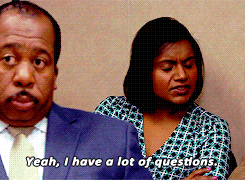What to do when no one’s buying
a step-by-step guide to troubleshooting slow sales—without spiraling, self-blame, or starting over.
There’s a certain kind of sting that happens when you finally put your work into the world—that product you spent months perfecting, the signature service you’re so dang proud of, the website you stayed up until 2 a.m. building—and the response is… silence.
At first, you refresh your inbox or your Stripe dashboard, telling yourself it’s just early. People are busy. They’ll get to it.
But after a while, the silence feels heavier. Doubt creeps in. You wonder if you made a mistake. Worse, you start wondering if you are the mistake.
If that’s where you are right now, I want you to hear this loud and clear: you are not broken, and your dream isn’t over.
Slow sales aren’t a judgment on your talent. They’re just a sign that something in your system isn’t connecting yet. And the good news? Systems, my friend, can always be fixed.
Roll up your sleeves and grab the Phillips head. 🛠️ Let’s get to work.
It’s not you. It’s your system.
When you’re staring at disappointing numbers, it’s easy to make it personal.
You start picking yourself apart—maybe I’m not good enough, maybe I’m not cut out for this, maybe people just don’t like what I do.
But slow sales almost never mean you’re bad at what you do. They usually mean there’s a disconnect somewhere between you and the people you’re trying to reach.
It could be that they don’t fully understand what you’re offering, or they’re not the right fit, or they simply don’t know you exist yet.
None of those problems are personal. They’re system problems. And system problems are fixable—without throwing the business baby out with the proverbial bathwater. 🫧
Where things usually go wrong
Over the years—both through my own launches and working with hundreds of solopreneurs—I've noticed that when nobody’s buying, it almost always ties back to one of these core leaks:
Clarity: People don’t understand what you’re offering or why it matters.
Audience: You’re reaching the wrong people (or trying to reach everyone, which is basically the same thing).
Visibility: Not enough people know about you or your offer.
Trust: They like the idea, but they’re not convinced you’ll deliver.
Value: They don’t feel the offer is worth the price.
Once you know which area is leaking, you can focus your energy where it’s needed, instead of spinning your wheels fixing things that aren’t broken.
Let’s walk through each one.
1. If people seem confused, you have a clarity problem
When people say, “Wait, what exactly do you sell?” or “That sounds nice, but I’m not sure what it would do for me,” that's a clarity leak.
People don’t buy what they don’t understand. And they won’t spend their energy trying to figure it out.
You have about ten seconds to make it crystal clear who you help, how you help them, and why it matters. If you can’t explain it in one simple sentence, sans jargon or buzzwords, you need to tighten that puppy up.
Instead of “bespoke coaching to unlock your highest potential,” say: “I help overwhelmed creatives organize their businesses so they can actually enjoy their lives.”
Clear beats clever every single time.
→ Ask yourself: “Could someone describe my offer in one simple sentence after seeing my page or booth or talking to me for 30 seconds?”
If the answer is no, work on simplifying your messaging until it’s obvious.
2. If you’re getting attention but no sales, it’s an “audience-offer fit” problem
You could be doing all the right things—posting, emailing, showing up—but if you’re showing up in front of the wrong people, it won’t matter.
Sometimes the issue isn’t how you’re showing up, it’s who you’re getting in front of.
If you make the world’s more comfortable ballet slippers, but you show up and try to sell them in the Chicago Bears locker room, you're going to feel like nobody wants what you’re selling.
The right message to the wrong audience will always fall flat.
→ Ask yourself:
Who actually wants or needs what I'm selling right now?
Where do they hang out (online or offline)?
How can I speak directly to them instead of the crowd?
How can I make those people feel seen, heard, and understood in my offer copy?
Instead of trying to market to everyone, zoom in. Think about who actually needs and wants what you sell and go deeper into reaching them.
You don’t have to reach everyone. You just have to reach the right ones.
3. If nobody’s seeing you, it’s a visibility problem
This is one of the most common issues, especially for solopreneurs just getting started. You could have the clearest message in the world and the perfect offer, but if nobody knows you exist, it won’t sell.
Visibility isn’t about shouting louder or chasing every algorithm update.
Visibility is about intentionally choosing one or two channels where you can consistently show up and be discoverable.
That could look like:
A regular booth at a local market
A weekly email newsletter
SEO-optimized blog posts
Pitching yourself for podcast interviews
Collaborating with aligned businesses
Whatever it is, you need a steady, intentional way to get new eyeballs on what you do.
→ Ask yourself: What is one thing I could do right now, today to get more (qualified) eyeballs on my offer? Start there.
Read next: You don't have a sales problem. You have a visibility problem.
4. If people are hovering but not buying, it’s a trust problem
If you’re getting clicks, inquiries, and comments like “this looks amazing!” but no actual purchases, you might be facing a trust gap.
People don't hand over their money without believing they’ll get what they’re promised.
They need to feel safe before they spend money. Safe that you’re real. Safe that you’ll deliver. Safe that the result is worth it. Especially when they’re buying from small businesses, where there’s less name recognition.
You can build trust by:
Showing your face regularly (not just logos and product photos)
Sharing client stories and testimonials
Giving a peek behind the scenes
Being consistent and responsive
→ Ask yourself: What trips you up when you buy from a new business? What gives you pause? Why do you click away?
Your customers are just like you. They want things to feel easy and safe. They need you to create that for them.
Trust isn’t a one-time thing you check off a list. It’s something you earn by showing up like a real human.
5. If price is the obstacle, it’s a value problem (NOT a price problem)
When someone says, “It’s too expensive,” it usually means they don't fully understand the value, not that the price is objectively wrong.
People aren’t just paying for a product or service. They’re paying to solve a problem and achieve a specific result or transformation.
If you’re getting a lot of price objections, look at how you're telling the story.
→ Ask yourself:
Are you clearly painting the picture of life with your offer vs. life without it?
Are you helping them feel the cost—in time, money, frustration—of not choosing it?
Are you connecting the dots between the price and the outcome?
Let me be clear—your job is never to reduce your price so your offer “fits” in someone else’s budget. It’s to make the value of what you offer worthy of it.
It’s to show them how their life gets easier, better, richer, or more joyful with your offer in it.
Your mission, should you choose to accept it…
The worst thing you can do right now is panic and start changing everything at once.
(Trust me, I’ve seen clients do this and it’s always a disaster.)
Slow sales are stressful, but they’re also incredibly useful feedback, if you slow down long enough to listen.
See it as an invitation to pause, tune in, and reconnect the dots between what you offer and the people who need it most.
Instead of throwing everything out the window, take a breath and ask yourself:
Where am I losing people?
Which of these five leaks feels the most likely right now?
What’s one small fix I can focus on this month?
You don’t have to fix everything overnight. You just need to find the one place that’s leaking the most and start there.
You are NOT your numbers
It’s hard not to take a slow season personally, especially when your business feels like a piece of your heart. You start wondering if you’re cut out for this. You start making up stories about what your quiet inbox means about you.
But your sales numbers are data points, not a verdict on your value as a human being.
You started this business because you had something worth sharing. That hasn’t changed just because you’re having a slow season.
Stay steady. Keep showing up. Fix the leaks gently, not frantically.
Your people are out there, my lovely friend. Let’s help them find you.







Hi Morgan, this is gold, I’m gonna write this comment fast so I can Restack this post.
About clarity. Years ago I got a phone call from an executive. I’d known her for years, I had worked with her company for years, I had spoken at her company event multiple times, etc etc.
She called me one day about a week after her company’s latest event, I had spoken there. We did a debrief on the event, and at the end of the call she says ‘oh BTW…’, then tells me she had an attendee tell her she was looking for someone that does digital consulting.
My friend, who I had known and worked with for about 5 years at this time then asked “is that something YOU do?” It was at that moment I realized I had a clarity problem lol
One way to simplify the clarity problem is to think of it this way; If your best friend was going to describe you someone ELSE what you do, what would they say?